Compare Electricity Plans
Compare latest electricity plans and prices.
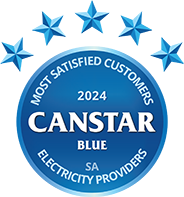
Given the cost of power in South Australia, you’ll naturally want to find a cheap deal – and we can help you with that. However, we can also show you which SA electricity companies are rated highest based on the experiences of their customers. Paying a low price is good, but not if it comes at the expense of other factors, such as customer service.
That’s why our ratings are designed to give you as much information as possible before you pick your next retailer. This year, our review is based on the feedback of more than 700 bill-paying customers in South Australia. Keep in mind though that, while our ratings include five of the most prominent electricity retailers in SA, you may find others operating in your area.
Canstar Blue surveyed 776 South Australian households for their feedback on their electricity retailer. Respondents had to live in South Australia, have an electricity account and pay the bills for their response to be eligible.
Respondents rate their satisfaction with their electricity supplier from zero to 10, where zero is extremely dissatisfied and 10 is extremely satisfied. Provider satisfaction was rated by respondents on the following criteria:
The winning brand is the one that receives the highest overall satisfaction rating once all the scores from the overall satisfaction criteria are combined and averaged.
Brands must have received at least 30 responses to be included, so not all brands available in the market have been compared in this survey. The brands rated in this survey are listed below in order of best overall satisfaction.
Best SA electricity providers:
Over recent years, our ratings have highlighted a clear divide in customer satisfaction between the biggest providers and some of the smaller challengers. This year is no different, with challenger brand Lumo Energy reaching the top of the leaderboard with five stars for overall satisfaction and across almost all other research categories. Origin Energy scored four stars overall this year, while AGL, Engie and EnergyAustralia landed on three stars.
Find more detailed information on our ratings methodology.
Here are some sponsored deals from the retailers on our database that include a link to the retailer’s website for further details. These are products from our referral partners†. These costs are based on the SA Power network in Adelaide but prices may vary depending on your circumstances. This comparison assumes general energy usage of 4011kWh/year for a residential customer on a single rate tariff. Please use our comparison tool for a specific comparison in your area and to see other products in our database that may be available. Our database may not cover all deals in your area. As always, check all details of any plan directly with the retailer before making a purchase decision.
 |
|
6% Less than reference price |
$2,036 Price/year (estimated) |
Go to Site |
Here are some of the cheapest published deals from the retailers on our database that include a link to the retailer’s website for further details. These are products from referral partners†. These costs are based on the SA Power network in Adelaide but prices may vary depending on your circumstances. This comparison assumes general energy usage of 4000kWh/year for a residential customer on a single rate tariff. Please use our comparison tool for a specific comparison in your area and to see other products in our database that may be available. Our database may not cover all deals in your area. As always, check all details of any plan directly with the retailer before making a purchase decision.

Lumo Energy has re-emerged as the top electricity provider in SA this year, scoring an almost clean sweep of five-star ratings across the board. The energy provider achieved five-star reviews for overall satisfaction, as well as for its value for money, customer service, bill and cost clarity and ease of sign-up. Online tools and advice received four stars.
Lumo Energy is one of two providers owned by renewable power generation company Snowy Hydro – the other being Red Energy. For customers in SA, Lumo Energy’s main selling point is access to its Lumo Rewards program, which offers discounts from a variety of major shopping retailers. Lumo Energy’s offers come with variable rates and no exit fees.
Here are the Lumo Energy plans on our database for South Australia. These costs are based on the SA Power network in Adelaide but prices may vary depending on your circumstances. This comparison assumes general energy usage of 4000kWh/year for a residential customer on a single rate tariff. Please use our comparison tool for a specific comparison in your area. Our database may not cover all deals in your area. As always, check all details of any plan directly with the retailer before making a purchase decision.
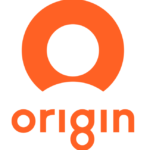
Origin Energy achieved a four-star rating for overall satisfaction, value for money, ease of sign-up, customer service, online tools and advice and bill and cost clarity.
Energy giant Origin has moved away from large conditional discounts, instead offering relatively low-rate plans and other sign-up perks. Origin offers variable rate products and all plans come with no exit fees or lock-in contracts. One plan even has Everyday Rewards points up for grabs. As one of Australia’s leading solar power retailers, Origin also has two specific plans for customers who own solar panels.
Here are the Origin Energy plans on our database for South Australia. These are products from a referral partner†. These costs are based on the SA Power network in Adelaide but prices may vary depending on your circumstances. This comparison assumes general energy usage of 4000kWh/year for a residential customer on a single rate tariff. Please use our comparison tool for a specific comparison in your area. Our database may not cover all deals in your area. As always, check all details of any plan directly with the retailer before making a purchase decision.
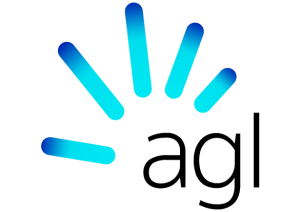
AGL scored three stars for overall satisfaction, value for money and ease of sign-up. It had four-star ratings for customer service and bill and cost clarity and a five-star rating for its online tools and advice.
One of Australia’s biggest energy companies, AGL generally offers two to three market contracts to households in South Australia at any one time, with varying benefits and conditions based on different preferences. These plans have variable rates, no exit fees or lock-in contracts. AGL also has a dedicated solar product, plus offers customers discounts on dining, shopping trips and attractions through the AGL rewards program.
Here are the AGL Energy plans on our database for South Australia. These are products from a referral partner†. These costs are based on the SA Power network in Adelaide but prices may vary depending on your circumstances. This comparison assumes general energy usage of 4000kWh/year for a residential customer on a single rate tariff. Please use our comparison tool for a specific comparison in your area. Our database may not cover all deals in your area. As always, check all details of any plan directly with the retailer before making a purchase decision.
 Engie scored three stars for overall satisfaction, customer service, value for money and online tools and advice. It received four stars for bill and cost clarity and ease of sign-up.
Engie scored three stars for overall satisfaction, customer service, value for money and online tools and advice. It received four stars for bill and cost clarity and ease of sign-up.
Engie (formerly known as Simply Energy) is typically a very price-competitive electricity provider in SA. The company is owned by a French utilities giant but remains based in Melbourne. Engie is well-known for offering a wide range of products, including exclusive deals for solar customers and seniors. Engie’s plans focus on offering low rates and guaranteed discounts. These rates are typically variable and plans come without any exit fees or lock-in contracts.
Here are the Engie plans on our database for South Australia. These are products from a referral partner†. These costs are based on the SA Power network in Adelaide but prices may vary depending on your circumstances. This comparison assumes general energy usage of 4000kWh/year for a residential customer on a single rate tariff. Please use our comparison tool for a specific comparison in your area. Our database may not cover all deals in your area. As always, check all details of any plan directly with the retailer before making a purchase decision.
![]()
EnergyAustralia has come away with three stars for overall satisfaction this year, as well as for its customer service, online tools and advice, bill and cost clarity, value for money and ease of sign-up.
As you might expect from one of the big retailers, EnergyAustralia has a major presence in South Australia. It offers customers a few different variable rate plan options, all of which are available over a 12-month benefit period. Aside from this, the retailer has also introduced a plan designed for customers who have solar panels on their roof.
Here are the EnergyAustralia plans on our database for South Australia. These are products from referral partners†. These costs are based on the SA Power network in Adelaide but prices may vary depending on your circumstances. This comparison assumes general energy usage of 4000kWh/year for a residential customer on a single rate tariff. Please use our comparison tool for a specific comparison in your area. Our database may not cover all deals in your area. As always, check all details of any plan directly with the retailer before making a purchase decision.
If you haven’t worked it out yet, finding the best provider and plan for your requirements can be extremely tricky. The fact is that there is no one-size-fits-all solution to energy costs in South Australia. Instead, you will need to work out which offer best meets your needs based on primarily:
You should also keep in mind that the ‘cheapest’ electricity provider doesn’t necessarily mean the ‘best’. Our ratings are based on customer satisfaction, rather than just the cheapest rates. Our cost comparison report for SA electricity providers, however, is a useful guide to which retailers offer the cheapest deals. Ultimately, you will want an electricity provider that has competitive rates, but also delivers reliable bills and good customer service when you need it.
It’s worth noting that energy prices change all the time in South Australia, so it’s hard to pinpoint the cheapest retailer at any one time. That said, GloBird Energy and Amber are typically some of the cheapest electricity providers in SA. With more than 15 power companies to choose from, finding the lowest prices and best value deals in your area will require some research.
Aside from price, it’s still important to check out other credentials of energy companies, like customer service, sign-up incentives and rewards programs. Although price may have the biggest impact on making a decision, it’s good to know which brands are willing to work a little extra for your business.
The three largest residential electricity providers in SA are AGL, Origin Energy and Lumo Energy. AGL has the largest market share in SA with 36.9%, while Origin accounts for 29.4% and Lumo Energy has 7.0%. Following these electricity retailers are Engie (6.9%), EnergyAustralia (6.7%) and Alinta Energy (5.2%).
Here’s a list of electricity retailers and their residential market share in South Australia, on the SA Power distribution network:
Source: the above figures have been sourced from the Australian Energy Regulator (AER) Retail Energy Market Performance Update for Quarter 2, 2024-25.
According to the AER, Origin Energy is the largest natural gas supplier in South Australia, holding 61.2% of the residential market, followed by AGL with 22.0% and EnergyAustralia at 8.1%. Trailing behind is Engie at 2.4%, while Alinta Energy represents 1.5%, Lumo Energy with 1.9% and Red Energy at 1.0%.
For small business electricity, it’s AGL who dominates in SA, representing a whopping 42.8% of the local market. Next in line is Origin (28%), Alinta Energy (5.0%) and Engie (2.7%).
In our latest annual review of SA energy providers, we reached out to more than 770 customers in SA to ask them a few questions about their purchase decisions. Here’s what we found:
Switching energy providers usually takes about two business days, after this time your account should be taken over by your new company. This means that your old provider will have about 48 hours to send you a final bill estimate and pass your details on to your new provider.
Switching to a new electricity provider is usually straightforward and can be done online or over the phone in minutes. After you’ve switched, you’ll likely receive a final bill from your old retailer and be updated once your account has been taken over by your new provider.

Katrina Hasdell is an Energy Content Producer at Canstar Blue, where she covers Australia’s retail energy market. Katrina is dedicated to providing consumers with easy-to-read information on their energy options so they can get better deals on electricity, solar power and more.
You can follow Katrina on LinkedIn.

Samantha Mauro-Todd is Canstar Blue’s Consumer Research Specialist, coordinating the consumer research program behind our customer satisfaction awards across Canstar and Canstar Blue in Australia and New Zealand. Sam has earned a Bachelor of Business (Marketing) from Griffith University and, with seven years in market research and two years in marketing, she is experienced in survey design, implementation and analysis, coupled with an understanding of marketing principles and best practice.
The list below features all the electricity providers that currently list plans in South Australia as per our database.
These retailers all operate on the SA Power network, meaning prices are consistent across the network and the state. Please note, there may be other providers in your area.
While some energy retailers play it straight with their electricity plans, it’s common to see various promotional offers or plans targeting a specific consumer segment to get new customers to sign up. Lumo Energy, for example, has a rewards program whereby customers can get money off at various retail outlets and theme parks. While tempting, it’s important to compare electricity providers in SA on their supply and usage charges before taking any discounts and incentives into account.
South Australia’s high retail electricity prices can be attributed to the costs of electricity generation, transmission and distribution. It is these costs that are passed onto customers once energy retailers set their profit margins.
Another factor is that SA also heavily relies on renewable energy like solar and wind farms to produce electricity, as there are no coal-fired power stations. This has caused much debate over the years, with many pointing the finger at renewables, while others blame inflated retailer costs.
Most energy bills will be broken up into two separate charges – electricity usage rates and electricity supply charges. The usage rates are charged in cents per kilowatt hour (kWh) for consuming power, while supply charges are billed in cents per day, covering the cost of electricity supplied to homes. The average supply charge in SA is between 90c – $1.15 a day. However, it’s the usage rates in SA that make energy more expensive, with the average hovering around 35c/kWh.
Most electricity plans in South Australia come with a feed-in tariff for solar customers. However, feed-in tariffs in South Australia can vary between providers. There are also few solar-specific plans available in SA. Nevertheless, retailers are competing to offer the most attractive feed-in tariffs, with rates of up to 20c/kWh currently available to new and eligible customers.
Given the high prices that South Australians often pay for electricity, you would be forgiven for thinking there wasn’t much competition between providers in the market. The price of any product or service generally gets higher when there is no competition. However, this is not the case in South Australia as many different electricity providers are fighting hard for new customers. The problem is the cost of electricity generation, transmission and distribution, which these energy companies need to pass on to their customers. However, the extent to which these costs are passed on to households is the subject of much debate. South Australia is also heavily reliant on renewable energy generation.
South Australia is home to more than 20 solar operating and wind farms, with a mix of private and public ownership. And while there are no more coal-fired power stations in the state, much of the electricity generated still comes from gas turbine power stations. AGL, Origin and EnergyAustralia all own gas turbine power assets in South Australia, however, AGL has since begun the process of closing its gas turbine assets down, with a full closure expected by 2026.
After years of increased competition in South Australia, recent figures from the Australian Energy Regulator (AER) show that many smaller retailers are chipping away at the market share of the bigger players, like AGL, EnergyAustralia and Origin. Despite this, AGL still has the largest customer share in SA, with Origin, Engie and EnergyAustralia also accounting for large chunks of the market. It shows that since the market was deregulated back in 2012, which resulted in many new providers entering the local market, many South Australians are now starting to switch providers.
The energy market went through a significant change in July 2019 when tough new industry regulations took effect, designed to cut power prices, but also make comparing plans easier. After years of big, often dodgy discounts, retailers must now compare their plans to a ‘level playing field’ tariff called the reference price. The idea is that, unlike before, there is now a consistent price from which all plans must be compared, meaning you can now get a better feel for which providers offer the best value. The reference price also acts as a price cap for those customers who were previously paying the highest prices. Households who were on ‘standing offers’ prior to this date were automatically switched over to the Default Market Offer (DMO).
Here are the previous winners of Canstar Blue’s Electricity Providers – SA Customer Satisfaction Award:

Best-Rated Electricity Providers NSW - June 26th
Looking to save on your monthly power bill? In this article, Canstar Blue compares single rate vs time of use energy tariffs.
– Read more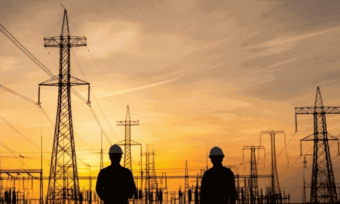
Best-Rated Electricity Providers NSW - June 20th
Canstar Blue reviews energy offers from retailers including Origin Energy, Engie, Alinta Energy and Red Energy.
– Read more
Best-Rated Electricity Providers SA - June 18th
Canstar Blue compares a range of natural gas prices in South Australia. Find out which retailer has the cheapest gas rates.
– Read more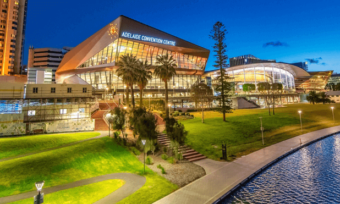
Best-Rated Electricity Providers SA - June 17th
Compare electricity prices, plans and discounts from energy providers in Adelaide, South Australia with Canstar Blue.
– Read more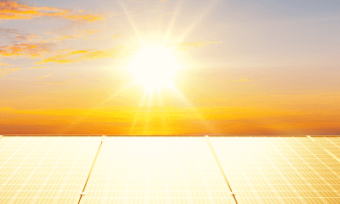
Best Solar Electricity Providers - June 3rd
Which solar provider offers the best solar Feed-in Tariff? In this article, Canstar Blue compares solar FiTs in each state.
– Read more*NSW, QLD and SA: Price is GST inclusive and is: The estimated lowest possible price a representative customer would be charged in a year for this plan, assuming all conditions of discounts offered (if any) have been met, based on the AER’s model annual usage in the distribution region as stated at the top of each table.
~VIC: Price is GST inclusive and is: The estimated lowest possible price a customer would be charged in a year for this plan, using the Victorian Government’s annual reference consumption for domestic customers in your distribution region as stated at the top of each table and assuming all conditions of discounts offered (if any) have been met.
ACT: Price is GST inclusive and is: The estimated lowest possible price a representative customer would be charged in a year for this plan, using the Independent Competition and Regulatory Commission (ICRC) annual reference consumption for domestic customers in your distribution region as stated at the top of each table and assuming all conditions of discounts offered (if any) have been met.
TAS: The price shown is inclusive of GST and is the estimated lowest possible price a representative customer would be charged in a year for this plan, assuming all conditions of discounts offered, if any, have been met. The general usage for products displayed in the table for Tasmanian postcodes is based on the median electricity usage of customers in Tasmania. The median usages are: 2,947 kWh/year for a Single Rate tariff, and 7,428 kWh/year for a Single Rate + Controlled Load tariff. These usage assumptions are based on the latest Typical Electricity Customers in Tasmania report released by the Office of the Tasmanian Economic Regulator. If the amount of electricity you actually use differs greatly from this estimate, your bill could be significantly larger or smaller than the charges listed for each plan.
Some plans may require you to meet certain conditions before a discount may become available to you. Check the energy provider’s plan information for details of all possible discounts that may apply and any conditions that need to be met to be eligible for these discounts. Some plans may have a minimum term longer than one year. In that case the total cost over the term will be much higher than the price (which is only for one year). Consider the provider’s detailed product and pricing information before making a decision to take out a new plan or switch electricity providers.
^What is the Reference Price?
The reference price is set by the Australian Energy Regulator (AER) for a financial year in relation to electricity supply to residential customers in the distribution region and is based on an assumed annual usage amount. Any difference between the reference price and the unconditional price of a plan is expressed as a percentage more or less than the reference price. The terms of any conditional discounts are shown, along with any further difference between the reference price and the discount applied if a condition is met, expressed as a percentage more or less than the reference price.
>What is the VDO?
The Victorian Default Offer (VDO) includes a daily supply charge and usage charges (per kilowatt hour). Differences in tariffs across distribution regions reflect the unique costs of providing electricity services in each area. The difference between the VDO and the unconditional price of a plan, based on the Victorian Government’s annual reference consumption for domestic customers in the distribution region, is expressed as a percentage more or less than the VDO. The terms of any conditional discounts are shown, along with any further difference between the VDO and the discount applied if a condition is met, expressed as a percentage more or less than the VDO.
Solar Products:
Annual cost estimates exclude solar payments. Feed-in tariffs shown are single rate only. Solar products may only be available to solar customers and some products may only be available to customers who purchase solar PV or other products through the retailer.
Referral Partners
†By clicking on a brand, 'go to site', 'shop online', 'get quotes now', or 'see offer' button, you will leave Canstar Blue and be taken to our referral partner to compare. Canstar Blue may be paid for this referral. You agree that Canstar Blue’s terms and conditions apply to this referral. Please note that references to an 'offer' do not mean that you will automatically be accepted or eligible for a product, eligibility requirements may apply.
Canstar Blue may earn a fee for referrals from its website tables, and from sponsorship of certain products. Fees payable by product providers for referrals and sponsorship may vary between providers, website position, and revenue model. Sponsorship fees may be higher than referral fees. Sponsored products are clearly disclosed as such on website pages. They may appear in a number of areas of the website such as in comparison tables, on hub pages and in articles. Sponsored products may be displayed in a fixed position in a table, regardless of the product's rating, price or other attributes. The table position of a Sponsored product does not indicate any ranking or rating by Canstar. The table position of a Sponsored product does not change when a consumer changes the sort order of the table. For more information please see How Are We Funded.